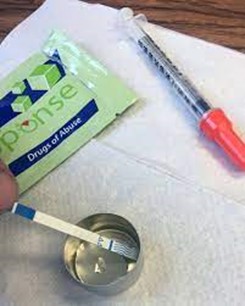New fact sheets on fentanyl test strips are now available from the MN Department of Health for public health workers and people who use drugs. These fact sheets provide information on the benefits of fentanyl test strips in overdose prevention, how to access and use fentanyl test strips, and other overdose prevention strategies.
- Fentanyl Test Strips to Prevent Drug Overdose - Fact Sheet for Public Health Workers (PDF)
- Fentanyl Test Strips to Prevent Drug Overdose - Fact Sheet for People Who Use Drugs (PDF)
To learn more about FTS and where you can access FTS kits for free in Minnesota, please contact the MDH Drug Overdose Prevention Unit by email at health.drugodprev@state.mn.us. You can also watch a video on how to use fentanyl test strips produced by Utah Naloxone. The FTS kits can be an effective tool for community engagement by police departments and can also have a positive impact on families and individuals who use drugs.
Background on fentanyl
Fentanyl is a powerful synthetic opioid that is used medically to treat severe pain. Illicitly manufactured fentanyl is driving an increase in drug overdose deaths both nationally and in Minnesota. We have seen national overdose deaths soar to a record 92,000 in 2020, according to the Centers for Disease Control and Prevention (CDC).
A contaminated drug supply is driving much of the surge in overdoses. The most recent cases of fentanyl-related harm in the U.S. are linked to illegally made fentanyl. It is sold through illegal drug markets for its heroin-like effect. It is often mixed with heroin and/or cocaine as a combination product — with or without the user’s knowledge — to increase its euphoric effects.
You may visit the Minnesota Department of Health’s Opioid Dashboard for more information on opioid overdose death, nonfatal overdose, use, misuse, substance use disorder, prescribing practices, supply, diversion, harm reduction, co-occurring conditions, and social determinants of health.
If you have any questions or comments, you may contact me at tstille@lmc.org or give me a phone call at (651) 215-4051.
Remember: Responder Safety = Public Safety
In the meantime, stay safe and be careful -
Tracy


No comments:
Post a Comment